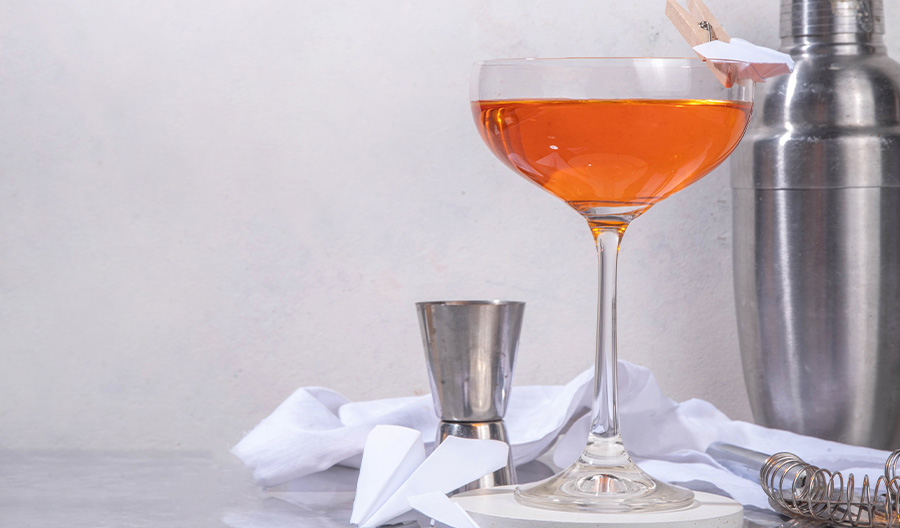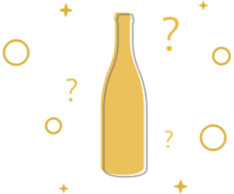Amaro—a bittersweet herbal liqueur made with grape brandy and a creative mix of herbs and spices unique to each producer—is a broad category of Italian herbal liqueurs often used as an after-dinner digestif.
There’s another player in the trend: American-made amaros. Behind the bar, on cocktail menus and in bottle shops, locally made craft amaros are everywhere. There’s also a microtrend happening within the rise of amaro. Winemakers are increasingly getting into the game as a response to industry challenges including climate change and slumping sales.
Amaro’s Ascent
Will Sissle, owner of The Cheese Shop, in Portland, Maine, notes that while his business is growing, wine sales have been flat and beer sales are down 30% since 2020. “People are drinking less,” Sissle notes.
The one category gaining popularity with his shoppers? Amaro. “With amaro, you’re not drinking a lot of it and you can dilute it or splash it into a beverage,” he adds. “Amaro is a whole new world for Americans, too—it’s trendy and we’re fascinated with it.”
The amaros that resonate with Sissle’s customers are the ones that come from small producers, like winemakers. “It has to stand out from what you would see at a regular market since our consumers are searching for what’s new and cool,” he says. “That’s why we’re seeing more wine producers making amaro. Vermouths and amaros are uncharted territory for people who are between the ages of 21 and 40—the target customer who is appreciating wine more and excited to look into other beverages.”

Amaro, Wellness Beverage?
The popularity of amaro dovetails with a health-conscious drinking generation. Historically, amaro was considered a medicinal tonic. It was infused with different herbs to remedy specific ailments, often with a focus on digestive support. This led to amaro’s status as digestif, or after-dinner drink. Today’s American amaro producers are inspired by the backstory of the beverage.
Amaro became an obsession. de la Nuez bought books on herbs and herbal medicine to learn about the different botanicals used to produce the spirit. The rise of wellness culture and sober-curious and Cali sober lifestyles might also be behind the growth of American amaro.
Lower-abv cocktail culture, like the embrace of aperitivo hour and the spritz, has opened up people's eyes to these types of aromatic beverages.
How Wine and Spirit Makers Are Experimenting with Amaro Recipes
Amaro can be made with a wide range of herbs and spices, which allows producers to get creative. They’re zeroing in on their own local herbs as an expression of local terroir.
Cavallo, who is a biodynamic winemaker, started producing nocino, a walnut-based amaro, in 2016. His farm was surrounded on all sides by black walnut trees, which can be toxic to other fruit trees and vegetables. “We decided we wanted to make something good out of their product as a way to counter the difficulties, and we were familiar with nocino so we gave it a go,” he says.
Recently, he was trying to create a baking spice and citrus-scented amaro. He ended up using 15 different botanicals for the final blend. “This led to some amazing discoveries, like dried and cold-extracted birch as the primary ingredient, which gives it a warming cinnamony feel,” he says. “The experimentation possible in amaro is a draw for producers looking to paint with a broader brush than typical wine and spirits making allows.”
Winemakers like Joe Apple, co-founder of R.A.S. Wines in Portland, Maine, even use their wines in their amari. He typically makes wine from wild Maine blueberries, a product you won’t find outside the state.
“For two weeks, we infuse a very high-proof, neutral grape brandy with gentian, plus cinnamon, cardamom, fennel seed, dried orange peel and a touch of cane sugar,” Apple says. “We strain out those ingredients, then blend the infusion with our wild blueberry base wine that has been aged in used oak barrels.”
A Response to Climate Change and Environmentalism
Winemakers feeling the sting of climate change are adapting to their new realities by incorporating amaros and vermouth into their repertoire. Hotter temps are contributing to higher pHs in fruit, which makes wine more susceptible to volatility, and smoke taint is ruining harvests. The solution? Distillation.
Brianne Day of Day Wines in Dundee, Oregon, is one producer who is going this route.
“In 2020, we had the huge statewide fires that decimated the wine harvest, so I had a lot of wine that wound up needing to be distilled,” Day says. “I had over 1,500 gallons of Pinot that could not be bottled because of smoke damage.”
She took the wine to the Portland distiller Freeland Spirits, so it wouldn’t go to waste. Together they began a more regimented and methodical crafting of that brandy into an amaro base.
“We need to have a place to use our wine that has been damaged by the effects of climate change, so you'll be seeing more amaro and vermouth around for the same reason,” says Day, who made just under 200 cases of amaro in 2020 and only makes it when necessary. “We can't just throw the wine away, so we come up with a plan B: turn that wine into something lovely that we can stand proudly behind.”
There’s also a deeper ethic at play with amaro. “People are getting tired of beverage monoculture, and this shift is part and parcel with the wider reconsideration of ecological concepts,” Luce says. “Lawns are bad; weeds are amazing.”
In the end, amaro also speaks to a desire for something different in the drinks landscape. I, for one, can’t get enough of it. Cheers to the sweet and bitter!

